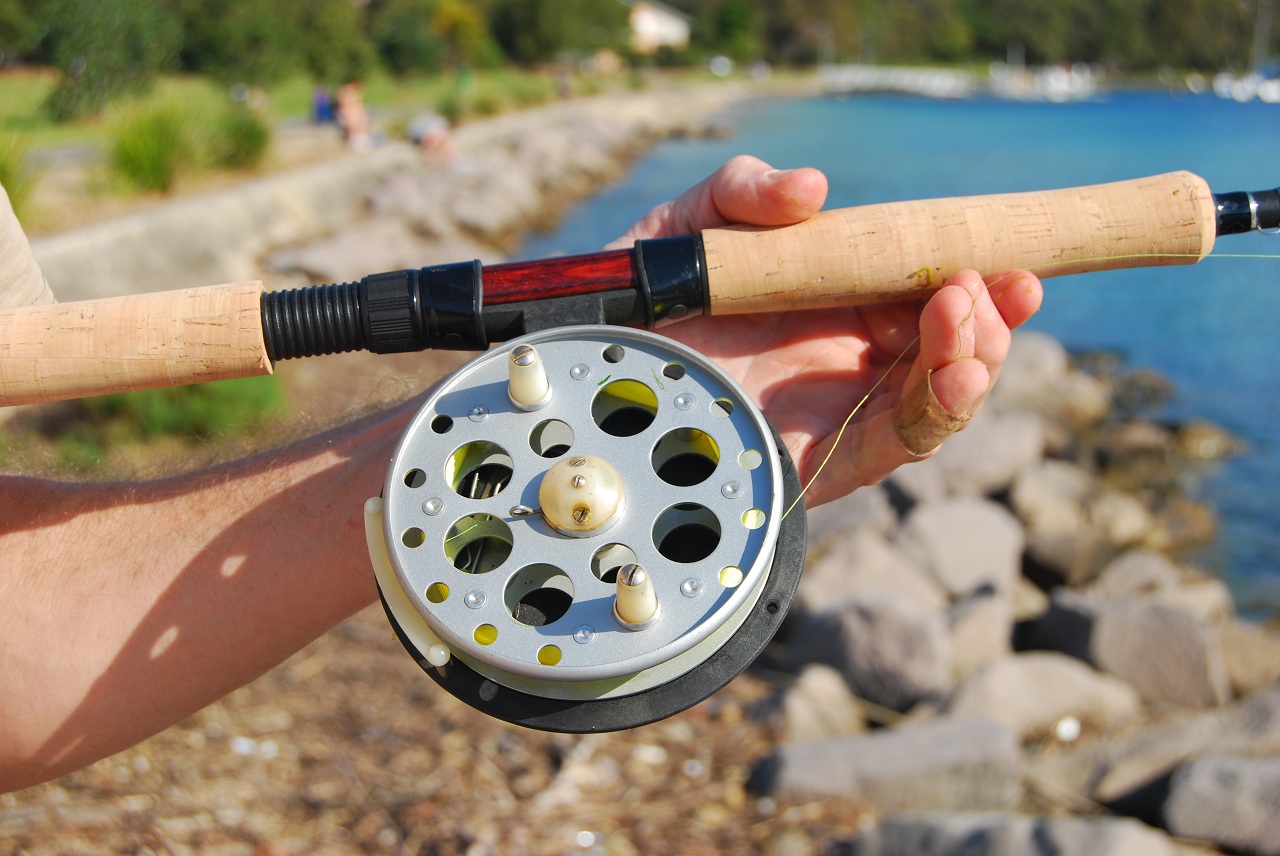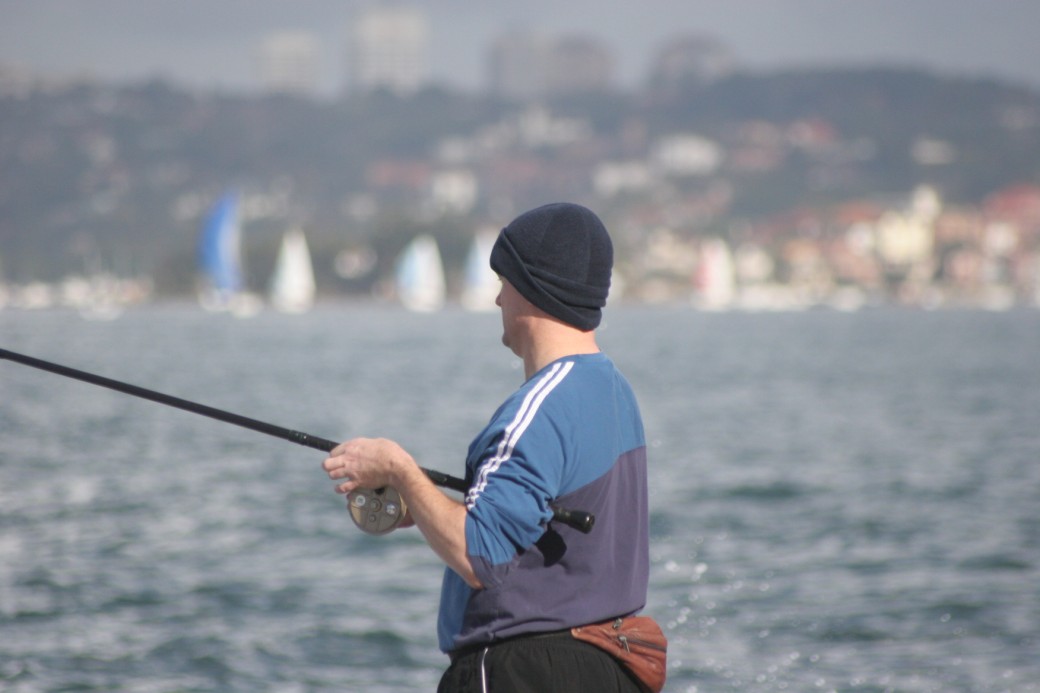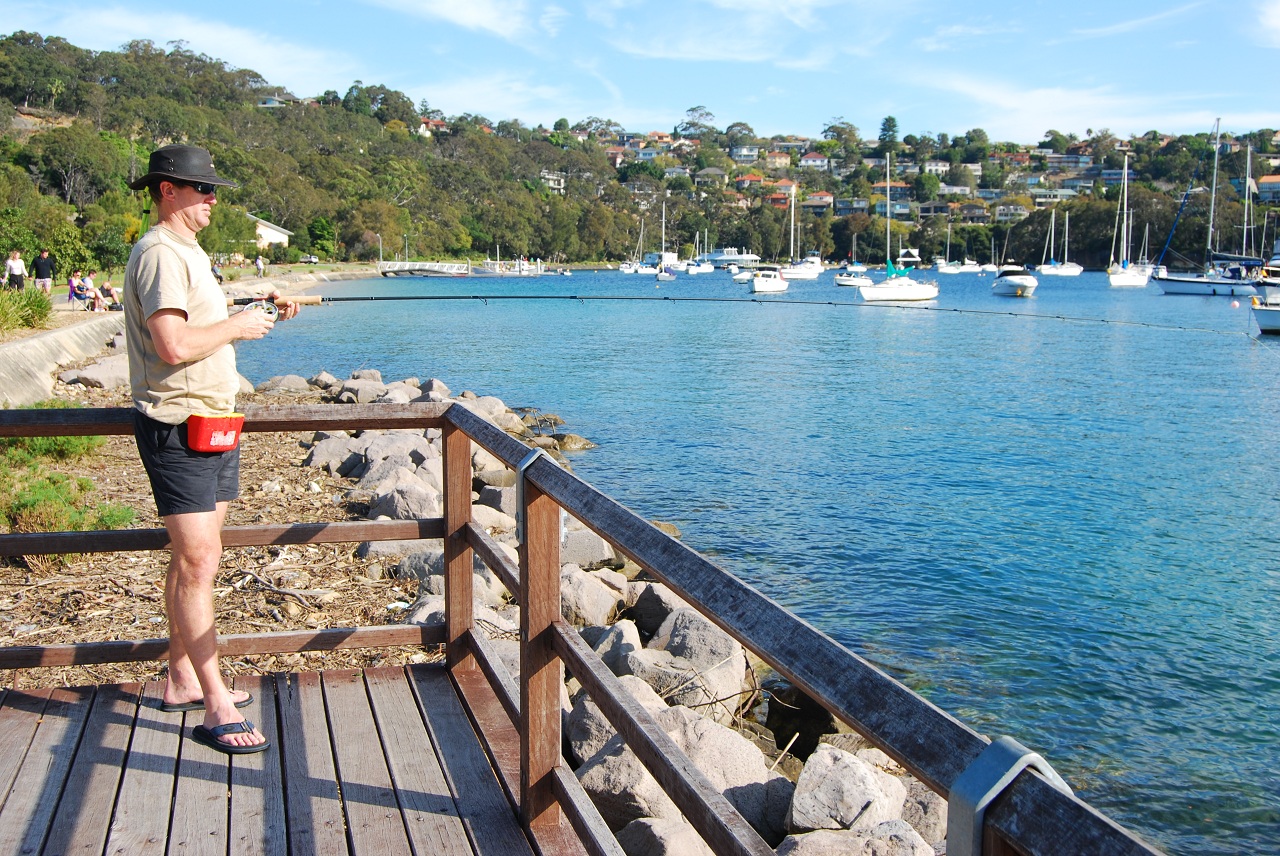I have described in Luderick 101 - Rigging Up, the gear required to catch luderick and illustrated a simple way to rig a float. In that article I also described the types of bait required. In an article yet to be written I will attempt to describe how to cast a centrepin. In the meantime you may want to have a look at this link or this one

Photo shows the grip on rod, tucked under arm the reel sits so that full control can be achieved with the left hand of line and spool
This article will describe line maintenance, knowing when to strike, and how to go about it.
Knowing when to strike is something you really only learn from experience. It's very dependent on the particular spot, the size of the fish and sometimes just the mood of the fish. If you are just starting out, there are some good basic rules to follow. Firstly, your float has to be set up correctly, only the top 1 inch or so showing above the water and weighted so that the fish can't detect the rig when it sucks the bait in. Secondly, your bait needs to be fixed firmly enough that it won't come off too easily and not so long that the fish will just nip bits off the end.
If you have the basics right, the fish will pull the float under. As a rule (and this is tempered by experience) count to 4 once the float is pulled under and strike on the 4. Alternatively you can recite "Mary had a little lamb" and strike on lamb. Others may be more comfortable with "hail Mary full of grace". Either way, it is a good rule to start with and is very effective.
Line maintenance is very important with blackfishing. If you are using a centrepin/Alvey and a nice long rod, then you should be fishing with the rod parallel to the water, probably with the reel in the palm of your hand and the butt of the rod tucked under you arm.

Photo is of some overweight oldish bloke but gives the idea of holding centrepin/Alvey and rod

Photo is of Still water fishing with a light long Aventa float rod
It is a good idea to either use a good floating monofiliament or to coat the top 30m of you line with a floatant. Musicilin or Vaseline are both OK, but these days I prefer the purpose made Japanese float lines. The point is, the line needs to float, to help keep your float moving well, and to make it easy to retieve line before striking. If the line is waterlogged it will impede the float and stop you making contact when it comes time to set the hook.
Line maintenance is where a centrepin/Alvey is really superior to an eggbeater for this type of fishing. The excess line is easily mopped up with a spin of the handles, line is easily fed out with the weight of the float or by a slight touch on the spool. Line should lay in a nice straight line from your rod tip, onto the water and in a nice straight line to your float stopper.
So, your line is nicely laid out, your float is riding perfectly and you see the float dip once, then reappears and then dips again. Start the count each time the float dips. Once the count reaches 4, what then?
Well firstly, don't rip the float out of the water and send it saiiling back at yourself or over your head. I have seen people doing this for years, every since I started fishing for blackfish. There really is no need for it, simply mop up any extra line with your reel and raise your rod arm through 90 degrees, moving the rod from the parallel to the perpendicular. Think about it, if you do this slowly, the tip of your rod will move through 18ft for a 13 ft rod. I reckon that is plenty of force to set a hook. The only time where it may be necessary to use more effort may be if you were fishing really deep, say 2 rod lengths.
If all goes well, you will initially feel like you are snagged, then you'll feel the first beat of the fishes tail. The rest is easy, particularly if you have a nice soft rod with a slow taper. Use the length of the rod to steer the fish away from trouble and the softness to absorb the lunges and last minute runs. Above all, take your time! Most fish are lost because they are "green", which only means they aren't ready to be brought to the net. Blackfish fight clean, they will generally stay out in clear water and characteristically will dive and dive in the one spot.
You will come across situations when targetting blackfish where they don't quite play the game as expected. Your float may disappear and reappear before the 4 count expires. Sometimes the float may raise out of hte water, an "up" rather than a "down". Sometimes your float will just stop in its drift, or start moving sideways in an unexpected manner. The 4 count is really only a guideline, a place to start and experience will dictate how to cope with the variations in behaviour. It's usually better to give them more time than less, but sometimes a speculative strike is in order.